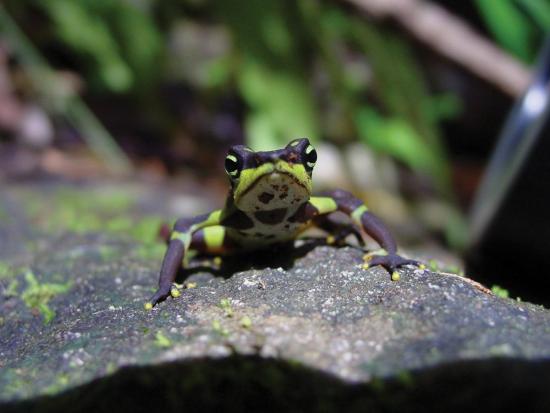Assessing Costa Rica's Amphibians and Reptiles
CBSG Mesoamerica was invited to facilitate a Red Listing workshop for Costa Rican herpetofauna. The workshop is a culmination of the long-standing and ongoing partnership between CBSG Mesoamerica and the Costa Rican herpetologist community.
 Photo: Phil Bishop
Photo: Phil Bishop
Facts:
- Costa Rica’s location in the neotropics and the varied ecosystems within its borders make it one of the most biologically diverse countries in the world.
- For every 10,000 km2, the country has 47 reptile species and 39 amphibian species.
- Amphibians and reptiles in Costa Rica are threatened primarily by habitat loss and chytrid fungus.
- CBSG Mesoamerica has organized three Conservation Assessment and Management Planning (CAMP) workshops for Costa Rican herpetofauna since 2001.
The Situation
CBSG Mesoamerica has a strong history of collaboration with herpetologists in Costa Rica, having helped to produce several broad-based evaluations of amphibians and reptiles in the country. Data from these evaluations have been used in the IUCN’s Global Amphibian Assessment (GAA) and Global Reptile Assessment (GRA), field research, and workshops for in situ and ex situ conservation. In recent years, the Costa Rican government requested that scientific organizations complete conservation status assessments of the country’s wildlife using methodologies with strong scientific basis. In response, the Universidad de Costa Rica invited CBSG Mesoamerica to facilitate a workshop to assess Costa Rican herpetofauna, and chose the Guidelines for Application of IUCN Red List Criteria at Regional and National Levels as the preferred approach.
The Process
Eighteen workshop participants applied their knowledge and expertise to categorize each species’ degree of endangerment using the IUCN’s quantitative Red List system. The workshop included presentations on the importance of using a scientifically-based criteria methodology, a summary of the IUCN Regional Guidelines, and a review of IUCN Red List Criteria. The analysis focused primarily on the most endangered species, followed by a general review of the species that fell outside the specific analysis of the IUCN Regional Guidelines. CBSG Mesoamerica facilitated the exercise and provided key information about the Red Listing process.
The Results
A total of 241 reptile species and 201 amphibian species were assessed, of which 15 (6%) and 43 (21%) species respectively were categorized as at risk of extinction. A total of 59 reptiles and 112 amphibians were recommended to be the focus of further research in taxonomy, population monitoring, distribution, or ecology. The workshop report was made available to herpetologists to inform them of the updated threat status and the research actions recommended for different species. The report was officially presented to the wildlife manager at the Costa Rican National System of Conservation Areas (SINAC) and will be presented to the IUCN for endorsement in 2015.
More:
- Read the workshop report.
- See reports from CBSG Mesoamerica's past amphibian and reptile assessments.
- Read more Highlighted Stories.


